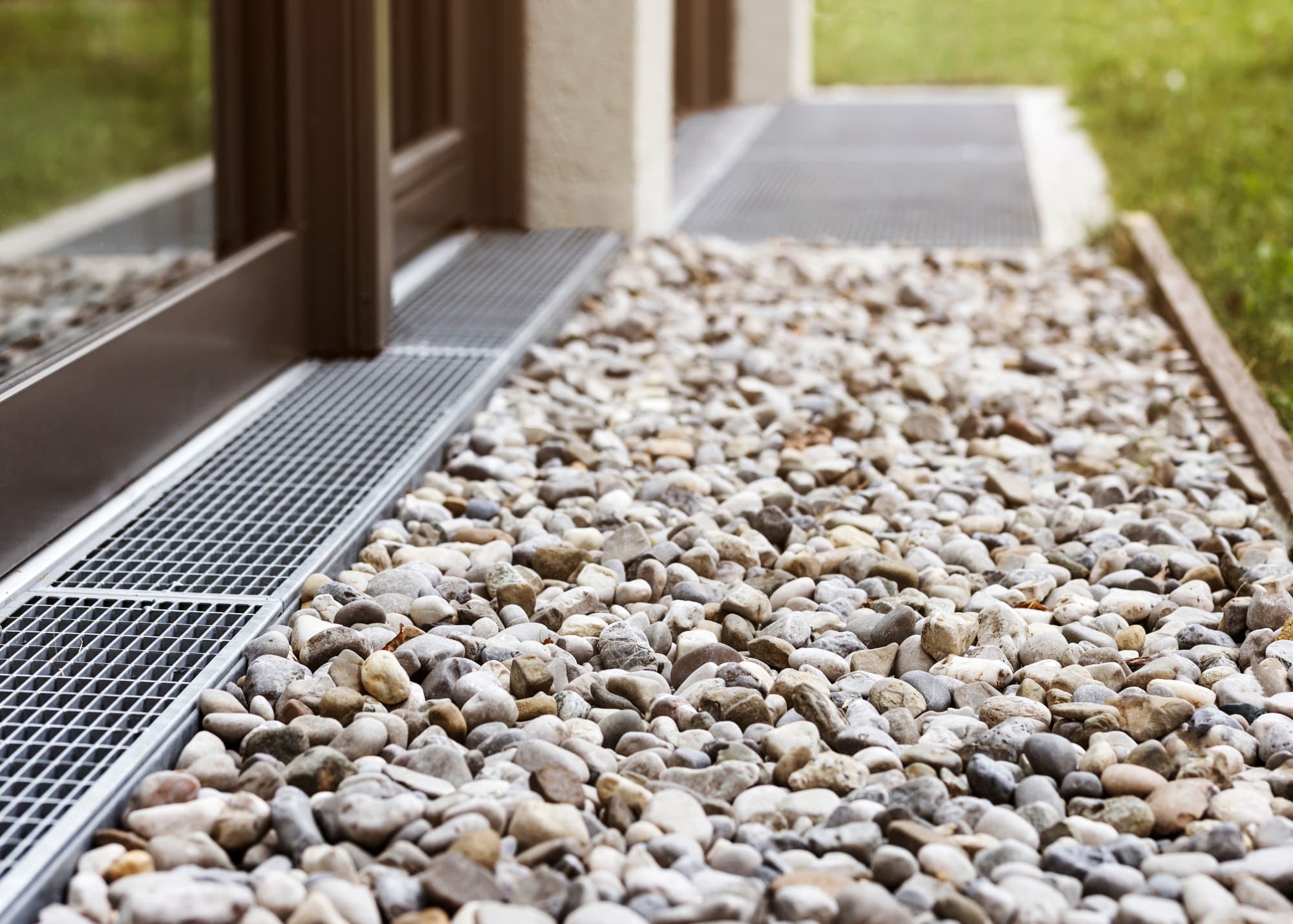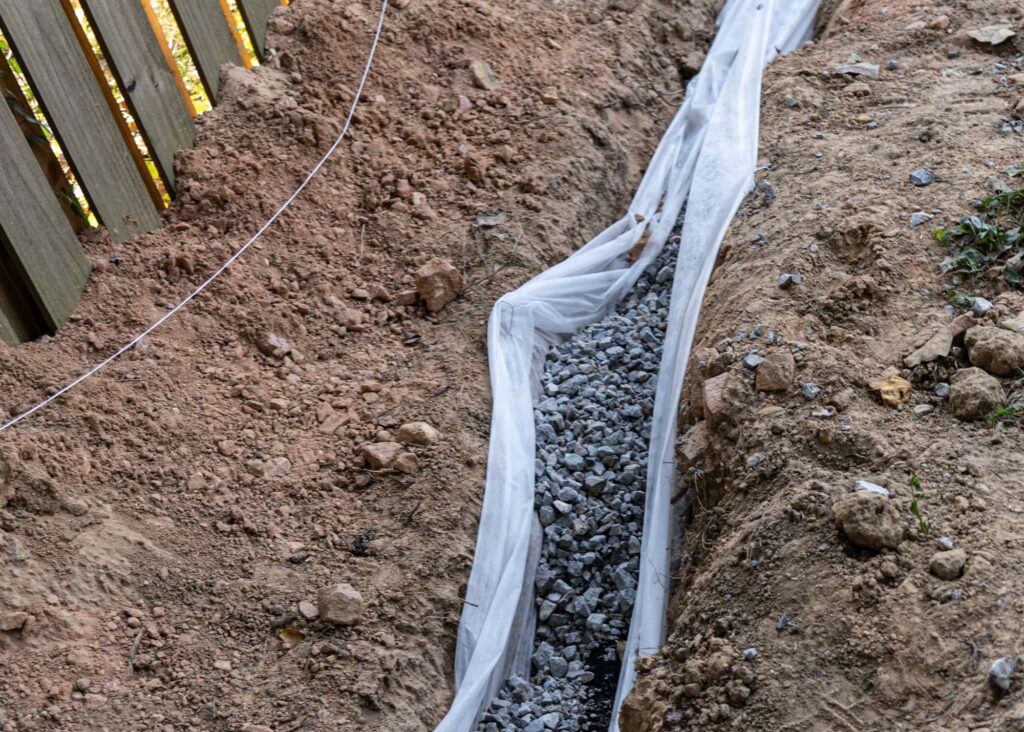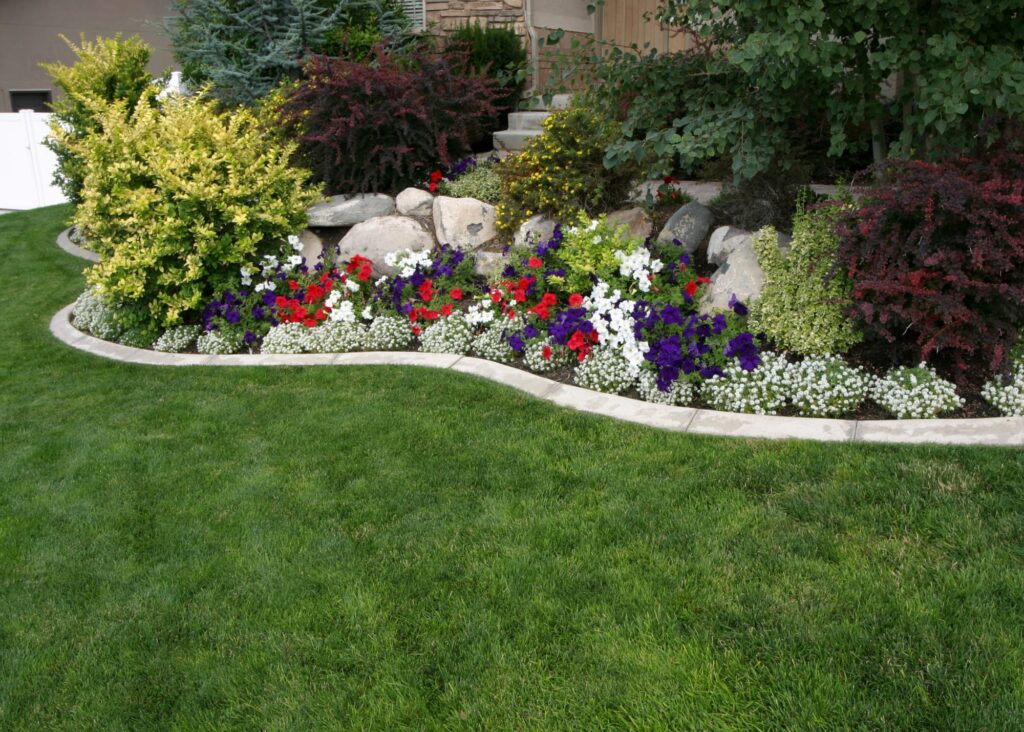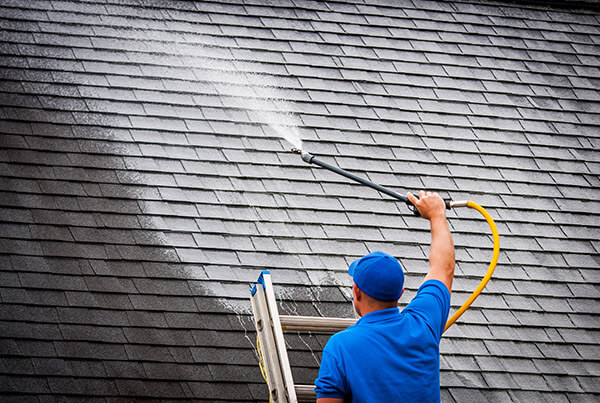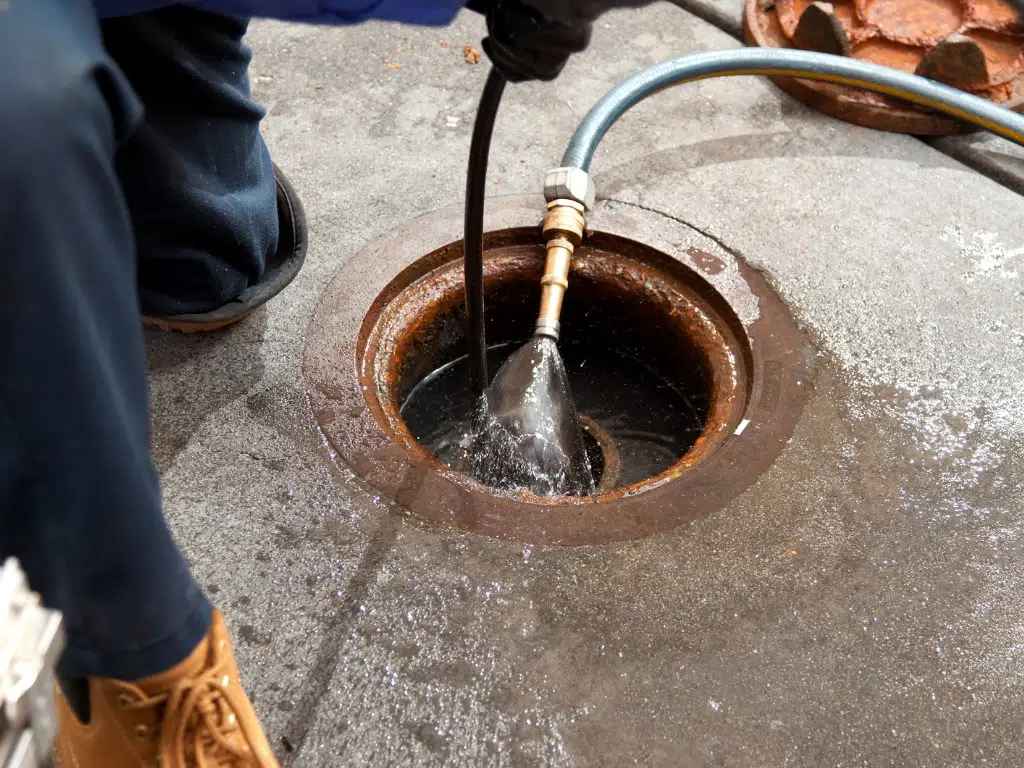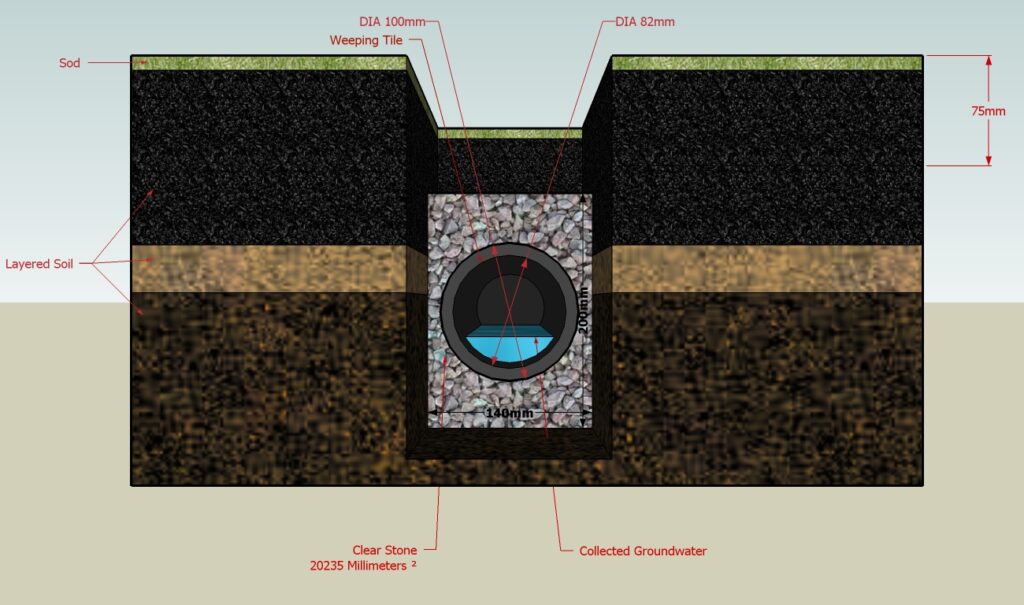Excess moisture can wreak havoc on your property. Standing water damages landscaping, causes erosion, seeps into foundations, and creates ideal breeding conditions for mosquitoes.
If you’re dealing with a soggy lawn, flooded basement, or foundation damage caused by poor drainage, a French drain system might be a great solution.
French drains, also known as weeping tiles, perimeter drains, or agricultural drains, are designed to redirect water away from your home’s foundation, protecting your property from water damage and ensuring a dry, stable environment.
But how much does a French drain cost?
The answer depends on several factors, such as the type of drain, the length and depth of the system, soil conditions, and additional features.
On average, homeowners can expect to pay between $1,650 and $12,250 for a professionally installed French drain system. Good drainage layout planning can reduce labor hours and lower your final invoice.
While this may seem like more of an investment than you had in mind, the long-term benefits of protecting your home from water damage are going to far outweigh the initial costs.
In this guide, we’ll break down factors that affect the cost of French drain installation, helping you make an informed decision on what works best for your property. Whether you’re dealing with a soggy lawn, a wet basement, or you want to prevent future water damage, understanding of the costs and functions of French drains is crucial in planning your drainage project.
Factors That Affect French Drain Installation Cost
When planning a French drain installation, several key factors will impact the overall cost of your project. Understanding all these variables will help you budget your project and make sure that you’re getting the most value for your investment.
Type of French Drain
There are two main types of French drains – interior and exterior. Interior French drains are installed inside your home, typically along the perimeter of your basement or crawl space. These drains are designed to capture water that seeps through the foundation walls and floor, directing it to a sump pump for removal.
Exterior French drains, on the other hand, are installed along the outside perimeter of your home, capturing water before it can enter your foundation. Exterior drains are generally less expensive than interior drains, as they don’t require the removal and replacement of concrete flooring.
Length and Depth of the Drain
The length and depth of your French drain will directly impact the cost of installation. Longer drains require more labor and more materials as well, which brings the cost up. Similarly, deeper drains necessitate more excavation work and may encounter obstacles like utility lines or tree roots, which can increase the overall cost.
Soil Type and Terrain
The type of soil on your property and the terrain can also affect the cost of your French drain installation. Heavy clay soils or rocky terrain can make excavation more difficult, requiring specialized equipment and additional labor. In contrast, sandy soils or relatively flat terrain may allow for easier installation, potentially reducing costs.
Accessibility of the Area
The accessibility of the area where your French drain will be installed is another crucial factor. If the installation site is difficult to reach or requires navigating around obstacles like landscaping features or structures, the project may take longer and cost more.
Additional Features
Depending on your specific drainage needs, you may require additional features like a sump pump or landscape repair. Sump pumps are often necessary for interior French drains to remove collected water from your basement or crawl space. Landscape repair, such as replacing grass, plants, or hardscaping elements disturbed during the installation process, can also add to the overall cost.
By considering these factors, you can work with a professional to develop a tailored French drain solution that meets your drainage needs and fits within your budget.
French Drain Cost Per Foot
One of the most significant factors in determining the cost of your French drain installation is the price per linear foot. This cost can vary depending on the type of French drain you choose, as well as the specific materials and labor required for your project.
Exterior French Drain Cost Per Linear Foot
Exterior French drains are typically less expensive than interior drains, with costs ranging from $10 to $75 per linear foot. This price will include excavation, gravel, perforated pipe, and backfilling factors. The wide range in cost per foot accounts for various factors, such as soil type, terrain, and accessibility.
Interior French Drain Cost Per Linear Foot
Interior French drains are generally more expensive than exterior drains, with costs ranging from $40 to $100 per linear foot. The cost is higher because of the additional materials and labor involved, such as removing and replacing concrete flooring and connecting the drain to a sump pump.
Benefits of Installing a French Drain System
Investing in a French drain system offers numerous advantages for homeowners facing drainage issues. By directing water away from your foundation, French drains protect your property from the effects of excess moisture that can be so damaging.
Consider the following benefits:
Prevents flooding and reduces the risk of long-term water damage
French drains are designed to capture and redirect water before it can enter your home or cause damage to your foundation. By preventing flooding and cutting down on the risk of long-term water damage, French drains can help you avoid expensive repairs to your property, such as foundation cracks, mold growth, and wood rot.
Cost-effective compared to potential damage repairs
While the initial cost of installing a French drain may seem substantial, it is often more cost-effective than dealing with the expenses associated with water damage repairs. Foundation repairs, mold remediation, and structural damage caused by excess moisture can easily run into tens of thousands of dollars.
Can be aesthetically pleasing with decorative grates and landscaping
French drains don’t have to detract from your home’s curb appeal. With the option to incorporate decorative grates and strategically placed landscaping, your French drain system can blend seamlessly with your outdoor living space.
Why Are French Drains So Expensive?
French drain installation costs can vary widely, with interior drains typically being more expensive than exterior ones. The primary reason for the higher cost of interior French drains is the additional labor and materials required for the installation process.
When installing an interior French drain, contractors must first tear out the existing basement floor, which is usually made of concrete. This process involves using specialized equipment to demo the concrete, which can be time-consuming and labor-intensive.
Once the concrete is removed, the contractor will excavate the trench for the French drain, install the necessary piping and gravel, and then repair the basement floor. Repairing the floor involves pouring new concrete, ensuring a proper finish, and allowing sufficient time for the concrete to cure.
This additional labor and the cost of materials, such as concrete and reinforcement, contribute to the higher overall expense of interior French drain installations compared to exterior installations.
However, it’s important to note that while the upfront costs may be higher, investing in a professional interior French drain can provide long-term protection against water damage, ultimately saving you money on potential repairs and renovations down the road.
How Many Years Does a French Drain Last
When properly installed and maintained, a French drain system can provide long-lasting protection for your home. On average, French drains can last between 30 and 40 years, making them a valuable long-term investment in your property.
Several factors contribute to the longevity of a French drain, including:
- Quality of materials used: Using high-quality, durable materials such as perforated PVC pipes and clean gravel can ensure your French drain stands the test of time.
- Proper installation techniques: A skilled contractor will follow best practices for French drain installation, including proper sloping, pipe placement, and backfilling to ensure optimal performance and longevity.
- Regular maintenance: Keeping your French drain system free of debris, such as leaves and dirt, can help prevent clogs and maintain efficient water flow. Regular inspections can also help identify any issues before they become serious problems.
Hiring a Professional for French Drain Installation
When it comes to installing a French drain system, it’s not something you want to mess around with on your own. Experienced contractors have the knowledge, skills, and tools necessary to ensure your French drain is installed correctly and efficiently. They can offer you valuable guidance on the best materials and design for your specific needs, and a guarantee of the work.
While the initial investment in a French drain may be more than you had planned, the big-picture, long-term benefits of protecting your home from water damage make it a huge value-add for your property.
Give us a call at Ware Landscaping at (312) 471-9547. We’re happy to offer a complimentary assessment and collaborate with you to find the best solution for your drainage issue!

